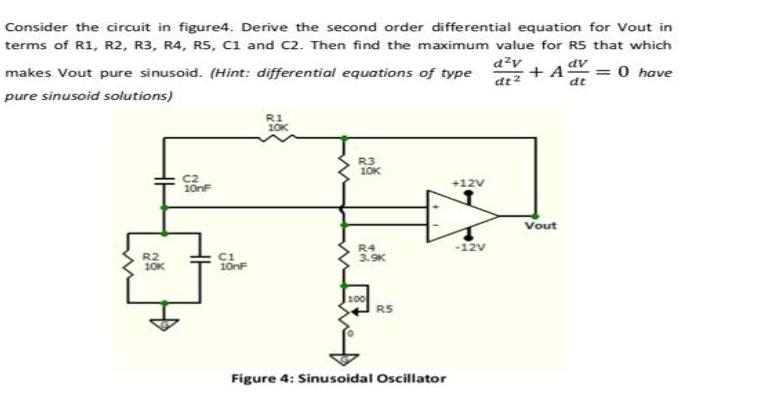Answered step by step
Verified Expert Solution
Question
1 Approved Answer
Consider the circuit in figure4. Derive the second order differential equation for Vout in terms of R1, R2, R3, R4, R5, C1 and C2.

Consider the circuit in figure4. Derive the second order differential equation for Vout in terms of R1, R2, R3, R4, R5, C1 and C2. Then find the maximum value for RS that which d?v + A dv = 0 have dt makes Vout pure sinusoid. (Hint: differential equations of type dt2 pure sinusoid solutions) R1 R3 10K C2 10nF +12V Vout -12v R2 10K C1 10nF R4 3.9K 100 RS Figure 4: Sinusoidal Oscillator
Step by Step Solution
★★★★★
3.38 Rating (157 Votes )
There are 3 Steps involved in it
Step: 1

Get Instant Access to Expert-Tailored Solutions
See step-by-step solutions with expert insights and AI powered tools for academic success
Step: 2

Step: 3

Document Format ( 2 attachments)
63609aca7fe59_232843.pdf
180 KBs PDF File
63609aca7fe59_232843.docx
120 KBs Word File
Ace Your Homework with AI
Get the answers you need in no time with our AI-driven, step-by-step assistance
Get Started


